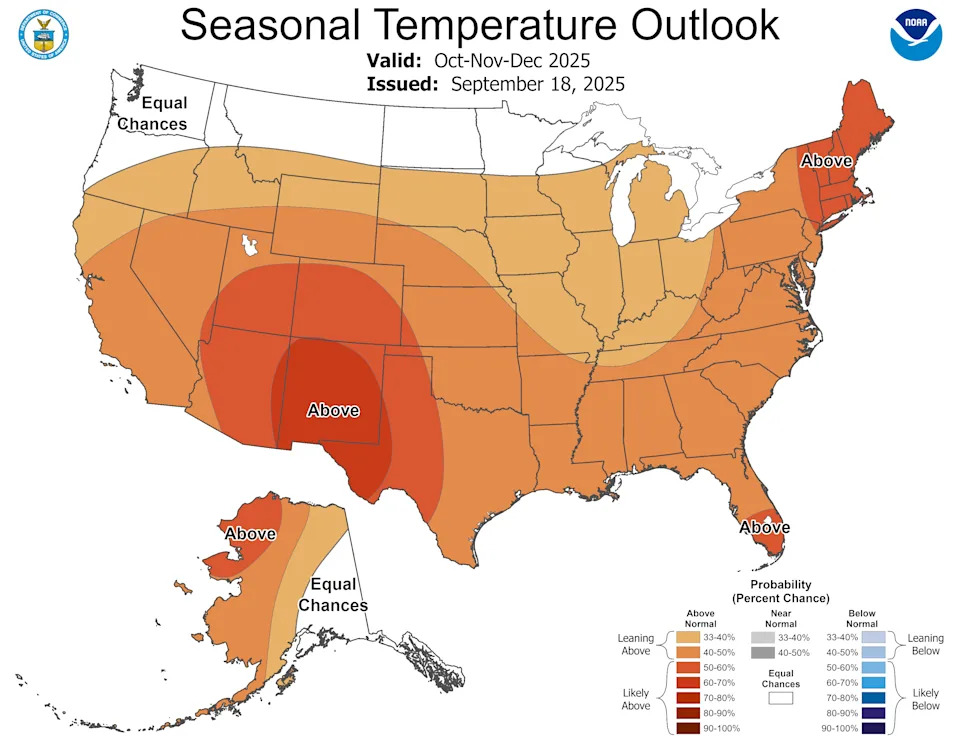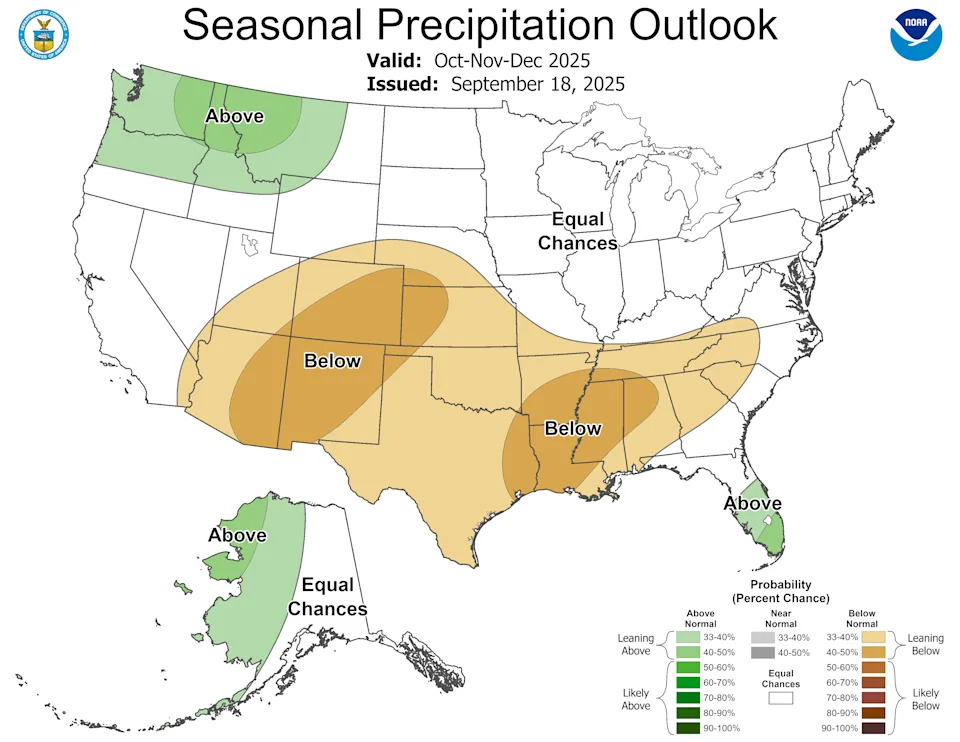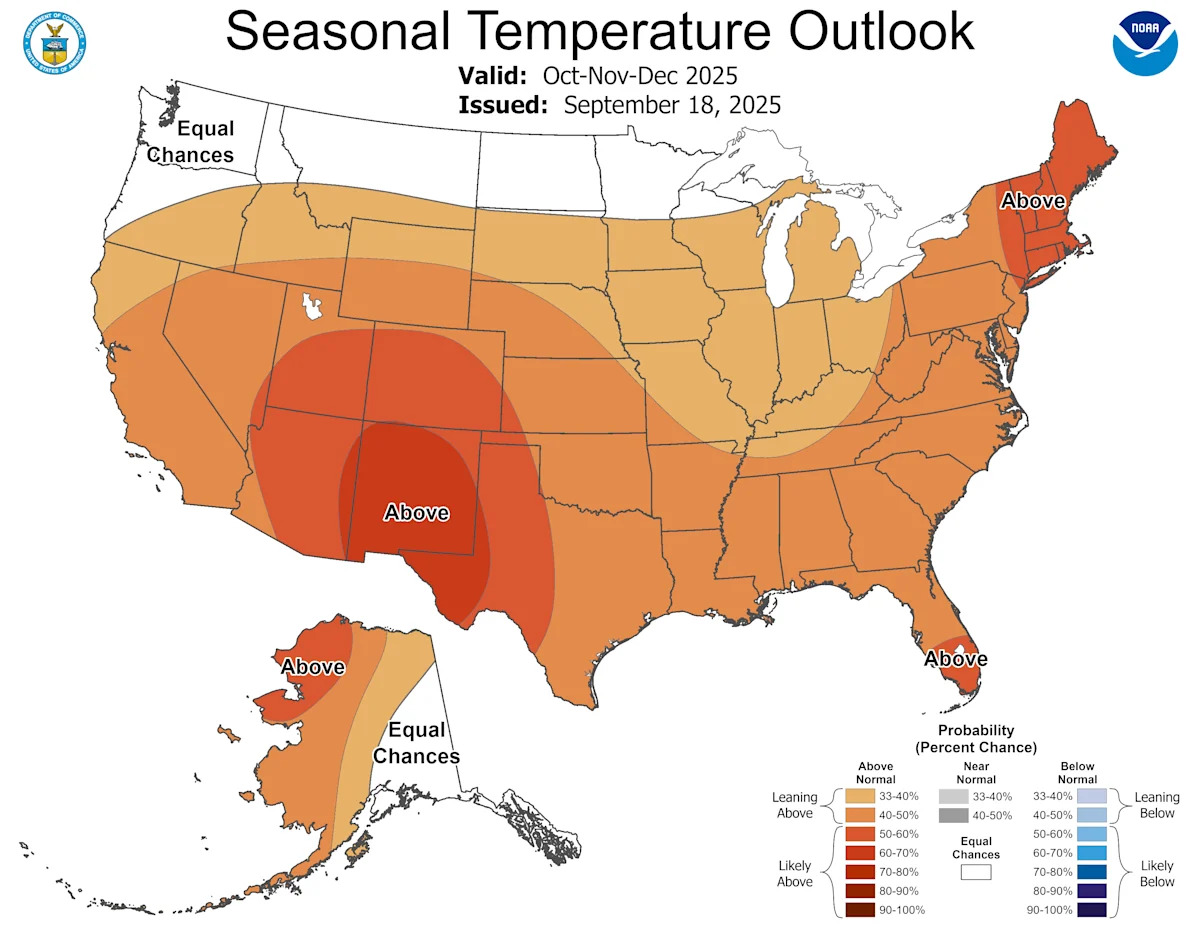Florida evenings have gotten a bit cooler the last few nights, with a cold front bringing overnight temperatures through parts of the North and Central area that even dipped into the 60s in some areas over the weekend.
Nationwide, the polar vortex is “ramping up from its summer slumber,” said meteorologist Judah Cohen in an Oct. 1 email to USA TODAY. And forecasters are watching to see if La Niña, a natural swing in the climate cycle, will emerge in the coming months.
So when does Florida get cold again?
That depends on which source you trust.
When will it get cold in Florida, according to the Old Farmers’ Almanac?
“Watch for early-season tropical activity and waterlogged gardens,” the Old Farmers’ Almanac said.
Florida may see a cooler-than-usual, wetter-then-usual winter season, the report said. The general forecast is for:
Below-normal temperatures
Coldest periods in mid- to late December, much of January
Above-normal precipitation
A possible tropical depression in early November
Average temps are expected to start dropping below 70 degrees in November.
The rest of the country is expected to see a mild winter, the almanac said in its winter prediction. “But from the Appalachians south through the Southeast and Florida, and westward across the Ohio Valley, we’re predicting a colder-than-normal winter.”
However, not everyone agrees with the almanac.
What does AccuWeather say about Florida’s winter?
AccuWeather forecasters are expecting an intensely stormy winter for the Midwest, Great Lakes, Ohio Valley, Northeast and parts of the mid-Atlantic, with the biggest storms forecast to hit around the opening and final weeks of the season.
For Florida, AccuWeather expects warmer-than-usual, dryer-than-usual weather, although warm water in the Gulf could add to severe thunderstorms that could bring more water to the state along with “damaging winds, lightning and tornadoes,” AccuWeather Lead Long-Range Meteorologist Paul Pastelok said.
That said, a pattern shift around late January or early February allow “significant cold air” to sweep into Texas and the Gulf Coast, Pastelok said.
AccuWeather’s longterm predictions show average November-December temps hitting low 70s in North and Central Florida, with a few days in the 60s. South Florida is expected to stay in the mid-70s to 80s through December.
What does the National Weather Service predict for Florida’s winter?
The October-November-December temperature outlook from the National Weather Service.
The National Weather Service, which is quick to point out that long-term predictions are subject to unexpected changes, splits the difference by predicting a warmer-than-average time in Florida over the next three months but more fall-winter rain than usual in North Florida.
“Probabilities favoring above-normal temperatures range from 50-60% over the Four Corners region and West Texas, the Northeast, and southern Florida, and peak at 60-70% over New Mexico and parts of neighboring states,” forecaster Anthony Artusa writes in the prognostic discussion for the seasonal outlook.
The outlook also “favors above-normal precipitation over much of the Florida Peninsula, the Pacific Northwest eastward to the Northern High Plains, and most of the western half of Alaska.”

The Octrober-November-December weather outlook for 2025 from the National Weather Service.
When does winter begin?
Which one?
Meteorological winter, part of a system that breaks seasons into 3-month periods for easier year-over-year comparisons, starts on Monday, Dec. 1.
Astronomical winter is based on the actual movement of the earth and sun. There winter begins on the solstice, which occurs at 10:03 a.m. ET on Sunday, Dec. 21 this year.
This article originally appeared on Pensacola News Journal: Will Florida winter be warmer or colder? Forecasts disagree

